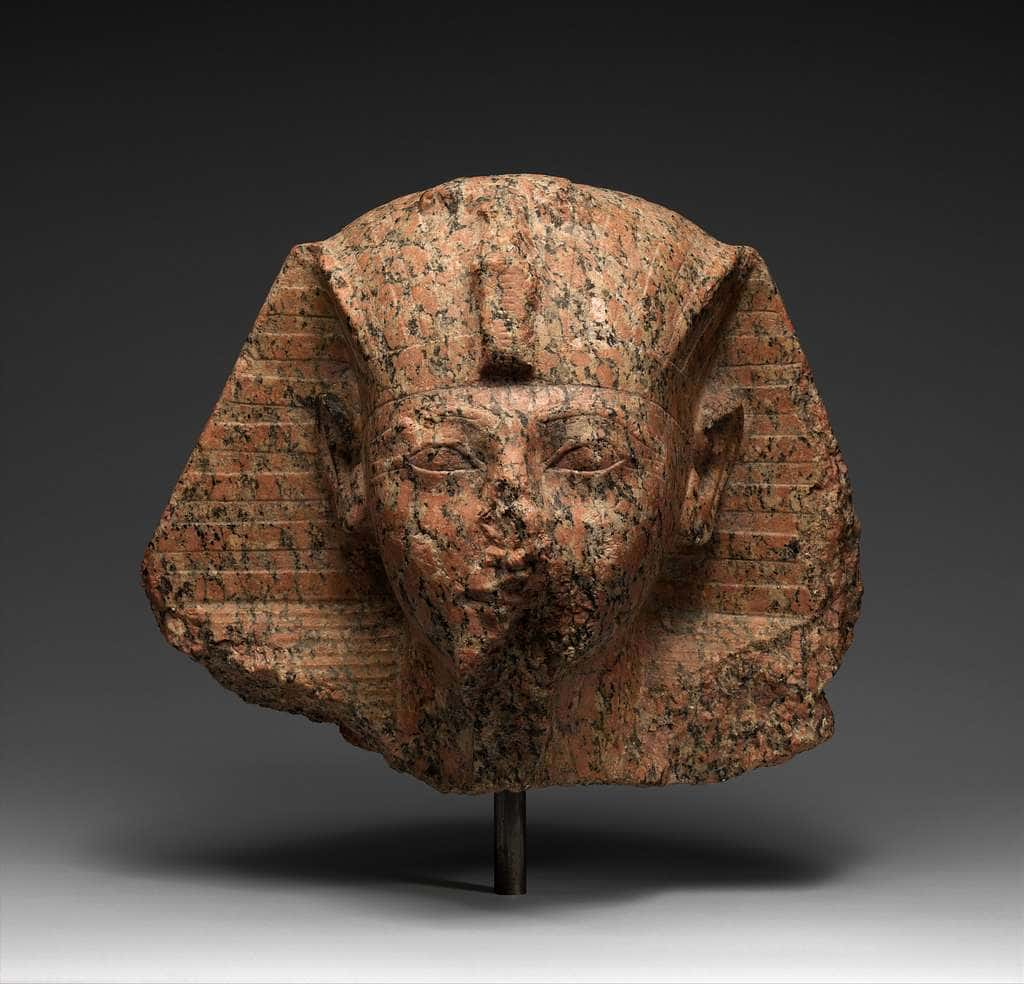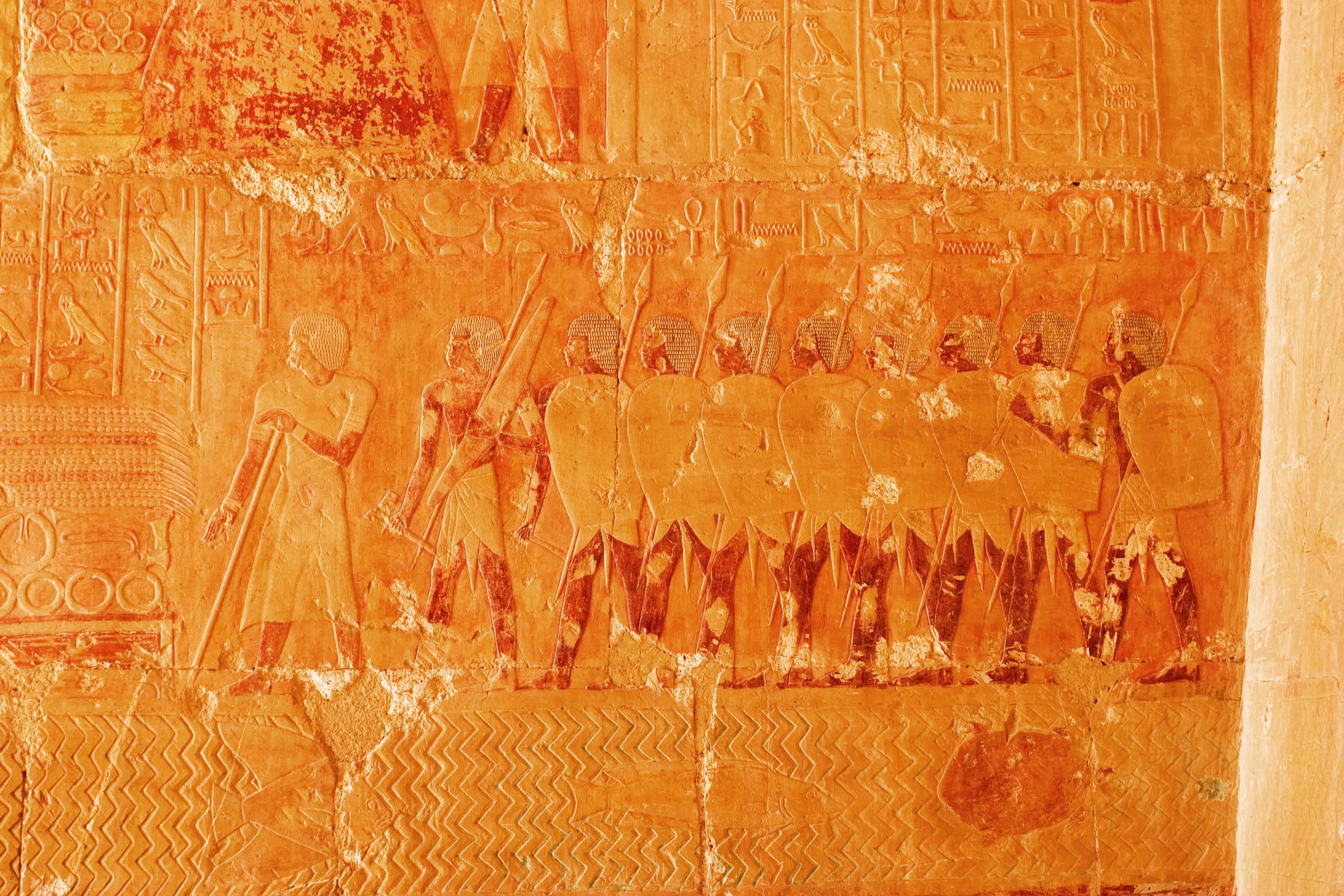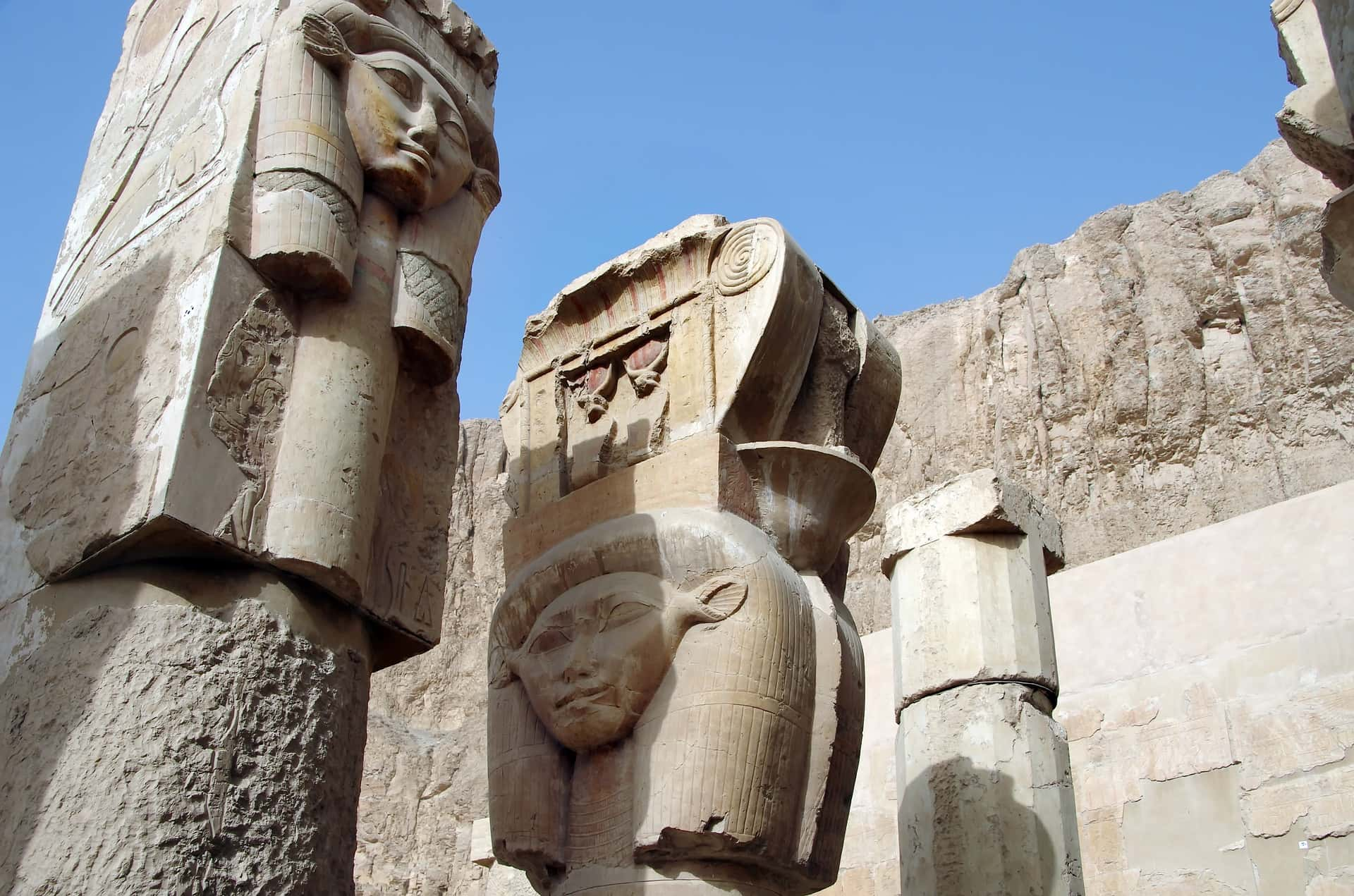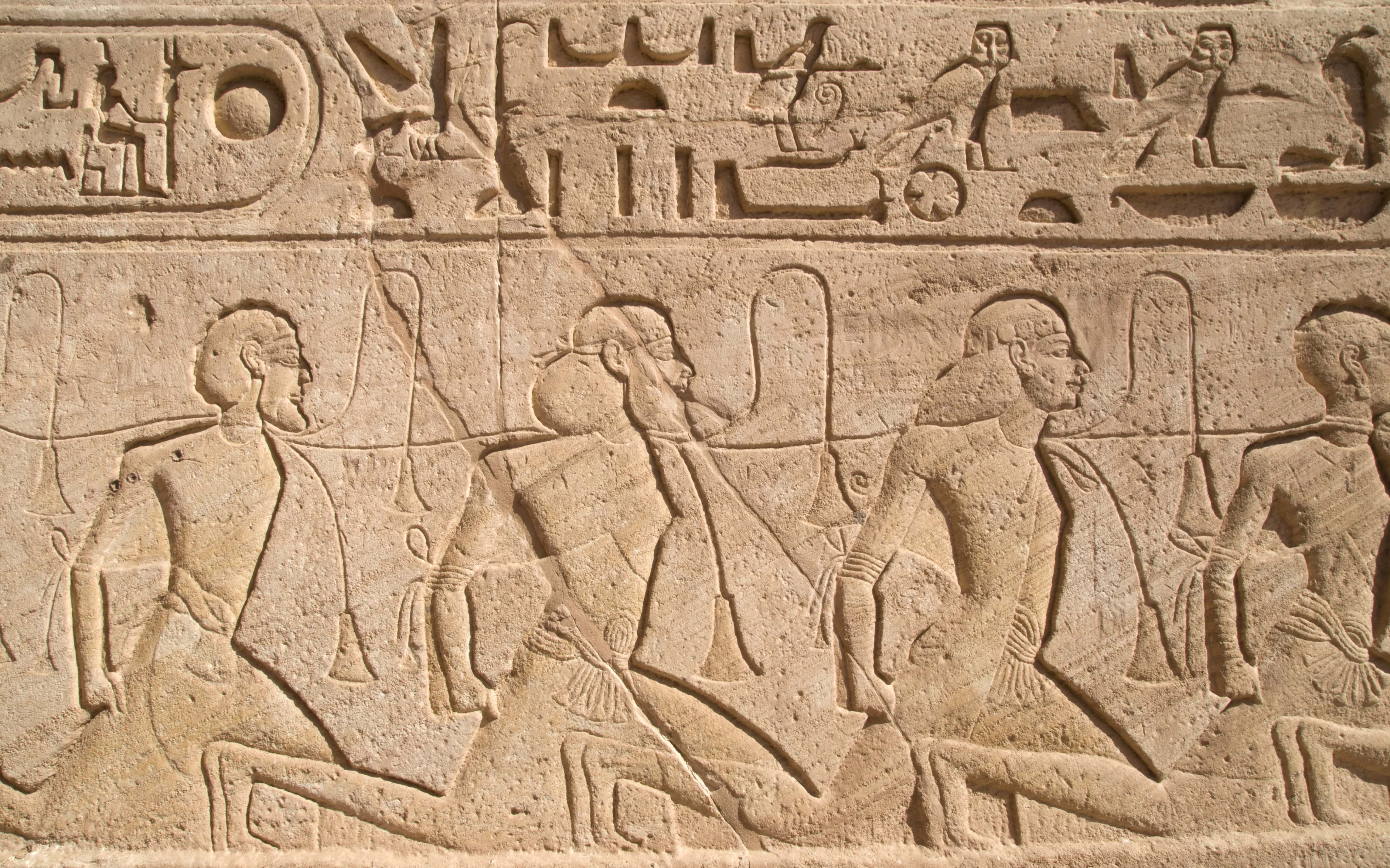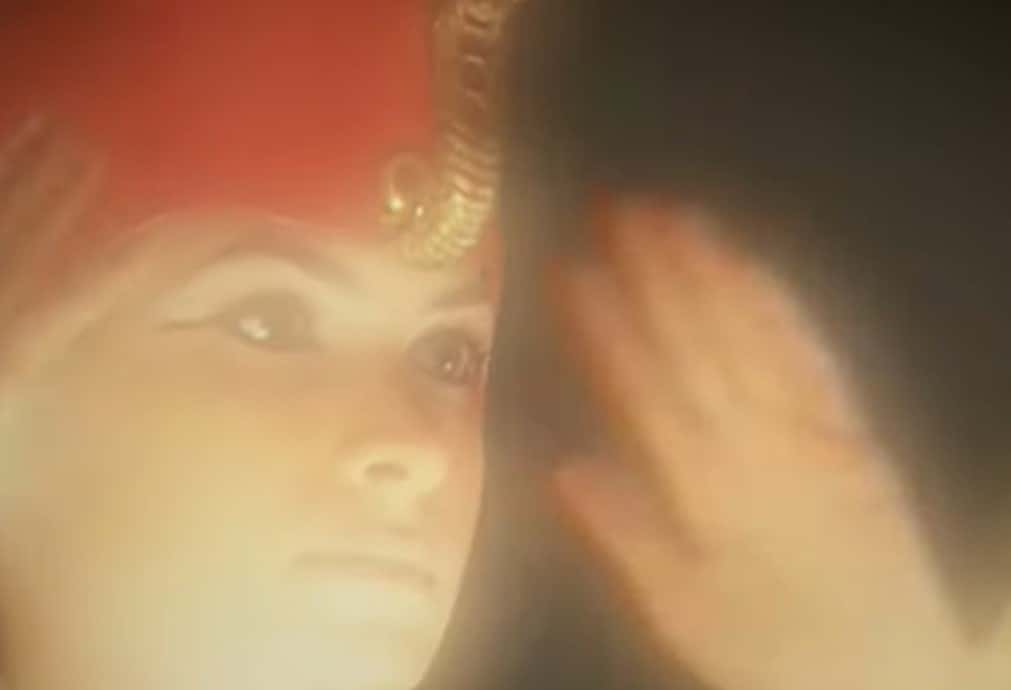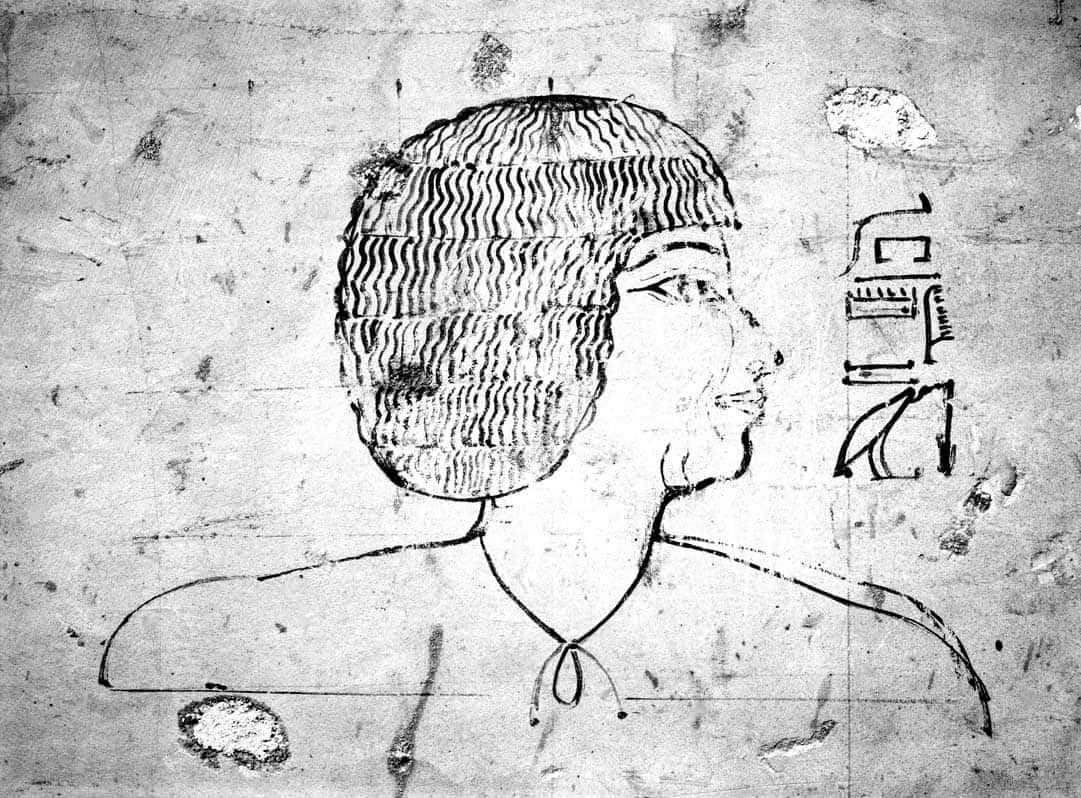Hatshepsut, Egypt’s Pharaoh Queen
Known as “the first great woman in history of whom we are informed,” Hatshepsut reigned as Pharaoh of Egypt during the 15th century BC. While she isn’t the first name that comes to people’s minds when they think of Egyptian rulers, Hatshepsut’s legacy is impossible to ignore, and she was extremely important in Egyptian history. Here are 42 majestic facts about Hatshepsut.

1. But Was She the Queen of Sheba?
Translated into English, Hatshepsut’s name means “Foremost of Noble Ladies.” Given that she was the Pharaoh of Egypt, we can’t argue with that kind of claim!

2. Long Before Christ
Hatshepsut is believed to have been born in 1507 BC. Of course, we can’t be 100% about the date, and we don’t know where she was born. If only papyrus birth certificates weren’t so biodegradable...
3. Born This Way
Reflecting the fact that Hatshepsut took on a position which was traditionally male, most of the statues or artistic depictions of this female monarch usually depict her as being in drag. She wears a false beard and is even given a more masculine frame. Historians suspect that she may likely have worn traditionally male garb when she was ruling as a Pharaoh.
4. 18th Time’s the Charm
Queen Hatshepsut belonged to the Eighteenth Dynasty of Pharaohs. Though you may not have heard of it, it's kind of a big deal. It represented the absolute height of Egypt’s powers as a kingdom and brought about enormous cultural change to the country. This glorious dynasty lasted centuries, and contained some of the most important names in all of history, like Hatshepsut herself and the famous King Tut.
5. High Five, Sister!
Speaking of the Eighteenth Dynasty, it was the second-longest-lived dynasty of Pharaohs behind the Ptolemaic dynasty. Not only that, it is renowned in Egypt for having not just one, but two different Pharaohs who were women. One was Hatshepsut, and the other was a woman best known today as Nefertiti.
6. Setting Trends
Hatshepsut’s parents were Thutmose I and his wife Ahmose. Thutmose I was well known for his armed conquests expanding the Egyptian empire further than it had ever gone before him. He was also the first confirmed Pharaoh to have a tomb set up for himself in the renowned Valley of the Kings.
7. Back when the Targaryens Were Considered Normal
This being the royal family of ancient Egypt, Hatshepsut was married to her half-brother, who was also named Thutmose. She was only 12 years old at the time.
8. Assuming the Mantle
Around the time of her marriage to her half-brother, when she was still a child, Hatshepsut’s father died. As a result, Thutmose II became the new Pharaoh. It’s been indicated by a few historical records that Thutmose II ruled for 13 years before he too perished, leaving his heir too young to rule. The boy’s stepmother, Hatshepsut, became the regent.

History's most fascinating stories and darkest secrets, delivered to your inbox daily.
9. Hurray! We Won!
Overall, Hatshepsut’s reign was said to be far more peaceful than other pharaohs’ time on the throne of Egypt. However, artwork in one of Hatshepsut’s temples does indicate to an early military campaign into her reign as Pharaoh. If this war did occur, it was reportedly fought between Egypt and Nubia, and it resulted in a decisive victory for Egypt.
10. Over Shadowed
Aside from her half-brother, Thutmose, Hatshepsut also had a younger sister. Sadly, that’s about all we know of Hatshepsut’s little sister. There aren’t even records of her name.
11. I Like Power, I’ll Take It Now
Hatshepsut ruled as a conventional regent for the young Thutmose III for seven years. After these seven years, she assumed the “full royal titulary” of Pharaoh.
12. No Hard Feelings?
Although she began her rule as the regent for her nephew and stepson, and took the role of Pharaoh for herself, Hatshepsut never once took an effort to kill or disinherit Thutmose III. In fact, he held command of all her armies during her reign as Pharaoh. But that may have all changed after Hatshepsut died...
13. Long May She Reign
Hatshepsut’s reign has been determined to have lasted more than 20 years. That makes her the longest-reigning female ruler in the entire history of Ancient Egypt. Given the incredible longevity of said history, that’s no small feat!
14. It’s a Girl!
According to the knowledge we have of the period, Hatshepsut had one child with her husband, Thutmose II. She was a daughter, and her name was Neferure. Reportedly, Hatshepsut was unable to bear more children after Neferure.
15. My Lost Child
Sadly, we know very little about the life of Hatshepsut’s daughter. Conflicting records indicate that she might have predeceased her mother, or that she lived long enough to marry Hatshepsut’s successor, Thutmose III. Until we invent time machines, however, we will never know the truth.
16. Find Them in Your Local Library
Because of her reputation in history, Hatshepsut has become a fictional character in several novels over the years. Examples of these include Child of the Morning by Pauline Gedge, King and Goddess by Judith Tarr, and Zipporah: Wife of Moses by Marek Halter.
17. Did It Sell as Well as Lord of the Rings?
Hatshepsut was also the subject of her own trilogy of books written by Patricia L. O’Neil. Her Majesty the King, The Horus Throne, and The Eye of Re have been well received, and the first book won the 2008 Genre Fiction Award.
18. Mysterious Timeline
Hatshepsut’s entire rule is shrouded in mystery, including the very basic question of when she ruled, and for how long. This is in part because the birth and death dates of her predecessors are very hard to come by on any ancient Egyptian tablet—but who knows, maybe it’s a discovery we’ll find in the Great Pyramids some day.
19. An Architect’s Dream
One of the most significant aspects of Hatshepsut’s reign was an emphasis on reconstruction and ambitious new building projects. Many of these building projects took place in the Egyptian city of Thebes.
20. She Brings Experience to the Workplace
One theory why Hatshepsut faced no opposition to her assumption of her own royal title was her experience within the rule of Egypt. During the reign of Thutmose II, Hatshepsut was very active within the administration of Egypt. Given this familiarity and experience with ruling, Hatshepsut’s ascension to the title of monarch must have made sense to her subjects.
21. And Featuring…
Some of you might be aware of the children’s book series titled Horrible Histories. In 2009, a British sketch comedy series was adapted from said books, lasting five seasons. Hatshepsut made an appearance in one of the episodes of this TV series, portrayed by actress Sarah Hadland.
22. The Power of Spiritual Vouching
For her part, Hatshepsut was quick to use the religion of ancient Egypt in her favor to become Pharaoh. She allegedly claimed that her own father had named her his heir. Moreover, it was reportedly declared by the Oracle of Amun, who was one of the primary gods in ancient Egyptian theology. It’s hard to argue with a god, after all!
23. I’ll Settle for Bronze
It’s worth pointing out that Hatshepsut was not, in fact, the first female Pharaoh of Egypt. There at least two other female monarchs before Hatshepsut. One of these was the final ruler of the Twelfth Dynasty, a woman named Sobekneferu.
24. Assigned Seating
Widely seen as the first epic artwork rooted firmly and openly within feminism, The Dinner Party by Judy Chicago made its debut in 1979. The artwork consists of a massive triangular table set up like a…well, just look at the title. Specialized placements are made around the table for famous women in history, including Empress Theodora, Eleanor of Aquitaine, and Hatshepsut herslf.
25. The Undiscovered Country
One of the most well-known achievements of Hatshepsut’s reign was an extensive trading expedition that she authorized. According to the historical record, the trading expedition’s destination was a land called Punt, but historians aren’t fully sure where that lay. However, a theory claims that this land called Punt was located in what is now the nation of Eritrea.
26. Looks Like We Found Her
Hatshepsut became the subject of a documentary by the Discovery Channel titled Secrets of Egypt’s Lost Queen. In the documentary, Hatshepsut was portrayed by actress Farah Ali Abd El Bar, presumably because having the camera sway over her portrayal in hieroglyphs wasn’t quite gripping enough.
27. Daughter of God
A myth was borne out of how Hatshepsut was born (pun intended). Rather than her supposed father, Thutmose I, it was said that Hatshepsut’s mother was impregnated by the god Amun, who assumed the form of Thutmose I during the coupling. As if that wasn’t miraculous enough, Hatshepsut was supposedly born in a lioness’ den, which her mother was brought to by another god, Khnum.
28. Writing on the Wall
If you’re curious how we still know about this myth surrounding Hatshepsut’s alleged divine birth, it was preserved on the walls of buildings during her reign. This saga can be seen on the walls of the Mortuary Temple of Hatshepsut.
29. As Valid a Belief as Any
In 1984, Tina Turner released her album Private Dancer, which became a commercial and critical smash hit. The first track on the album was called “I Might Have Been Queen.” The song originated from a conversation between Turner and her songwriters about creating a song about her personal life story while also referencing Turner’s belief in past lives. In Turner’s case, the “queen” in the song was Hatshepsut herself; Turner suspected that she had been Hatshepsut in a past life.
30. Let’s Build Something Epic
One of the finest architectural wonders of ancient Egyptian history was built during Hatshepsut’s reign and named after her. The Mortuary Temple of Hatshepsut stood near the Valley of the Kings on the west bank of the Nile. It served not only as a grand tribute to Hatshepsut, but it was also a place for active worship of the gods important to her.
This was an architectural change in Egyptian history, as previous temples relied less on active participation and more on “megalithic geometry.” Subsequent temples took their line from the Mortuary Temple.
31. Workplace Romance
The man behind the Mortuary Temple of Hatshepsut was an architect named Senenmut. Born from a very common background, Senenmut rose to astonishing class heights during Hatshepsut’s reign. Not only was he the architect, he was also the high steward. If one theory can be believed, Senenmut was also the lover of Hatshepsut.
32. There’s Certainly a Case
You might be wondering just why some Egyptologists are so certain that Hatshepsut was having an affair with her chief architect Senenmut. They usually point to two pieces of evidence in particular. One such clue is that Hatshepsut apparently allowed Senenmut to inscribe his own name and image within the Mortuary Temple.
Another bit of evidence comes from an unfinished tomb that was used as a rest house by Senenmut’s workers. An old piece of graffiti that the workers left behind is the image of a man and a pharaoh in the act of intercourse. The man would presumably be Senenmut, and the pharaoh (who is portrayed as being hermaphroditic) would naturally be Hatshepsut, a female king.
33. Stricken From the Record
During Hatshepsut’s reign, one of the most powerful figures in her court was a man named Djehuty. Amongst his several titles, Djehuty was mainly known to oversee the royal treasury. However, for reasons lost to history, Djehuty fell into disgrace after at least seven years of service under Hatshepsut. Not only was his name erased, even within his own tomb, the names of his family were also attainted. If only Hatshepsut’s ghost could come back to tell us what Djehuty did to deserve that!
34. I Need Options
Like her father, Thutmose I, Hatshepsut has a tomb in the Valley of the Kings. It was discovered in the 20th century by British archaeologists. However, it wasn’t the only tomb designed for the female Pharaoh. Three tombs were constructed and set up for her final resting place.
35. Absent Mummy
There was one big problem with this discovery of Hatshepsut's royal tomb, however: Hatshepsut’s body wasn’t actually in there, and it wasn't because of the usual issues with grave looting. However, the answer to the mystery would be revealed shortly after...
36. That’s a Morbid Loot-Bag…
In 1881, long before discovering Hatshepsut's empty tomb in the Valley of Kings, archaeologists discovered a canopic box at another dig site that contained an embalmed liver, an embalmed stomach, and a single human tooth. The box was inscribed with Hatshepsut’s name. For a long time, those were her only supposed remains. Until the mystery began to unravel...
37. It’s Her!
In 1903, the tomb known to archaeologists as KV60 was discovered by British archaeologist Howard Carter. Inside this tomb were the remains of two women. The first was believed to be Hatshepsut's nurse, but the other body could not be definitively identified as Hatshepsut herself for a long while after. But then there was a break in the case.
In 2007, a new examination of the second mystery mummy revealed that she was missing a tooth. Remember that canopic box we mentioned above? Its single tooth matched the others in the mummy’s mouth. This proved that the mummy was indeed the monarch formerly known as Hatshepsut, discovered at last.
38. A Mummy’s Autopsy
Thanks to the technology of today, studies on Hatshepsut’s remains have revealed a lot about her probable cause of death. She was likely suffering from diabetes and bone cancer during her final years, the latter of which is likely what caused her demise.
39. How Was She Supposed to Know?
Surprisingly, scientists and archaeologists have even determined a possible cause for the bone cancer which ultimately took the life of this powerful figure in ancient Egyptian history. Hatshepsut seems to have had a skin disease of some sort during her life. Allegedly, Hatshepsut covered the effects of this skin disease with skin lotion, as you do. However, the lotion proved to be carcinogenic, which caused the cancer to develop within her body.
40. You’re Looking Great for Your Age
If you want to visit Hatshepsut’s mummy, you can visit her remains at the Egyptian Museum in Cairo.
41. Hatshepsut Who?
More than 20 years after Hatshepsut’s death, during the reign of her successor, Thutmose III, all the temples and statues associated with Hatshepsut were defaced and damaged. This was allegedly a case of “damnatio memoriae,” where a person is condemned with an attempted erasing of their existence. Luckily for historians, they didn’t do a good enough job to suppress Hatshepsut.
42. What’s the Cause?
The classic theory on why Thutmose III ordered the defacing of Hatshepsut’s monuments was out of jealousy and spite for the woman who prevented him from taking the throne until her passing. However, this kind of assumed relationship between Thutmose III and Hatshepsut belies the fact that he was politically active and commanded armies during her reign.
Moreover, the damage done to her monuments wasn’t ordered until Thutmose III was an old man. The current theory embraced by historians is that Thutmose III ordered the defacing to prevent any of Hatshepsut’s relatives from trying to seize power rather than his own heir, who reigned as Amenhotep II.
Sources: 1, 2, 3, 4, 5, 6, 7, 8, 9, 10, 11, 12, 13, 14, 15, 16



